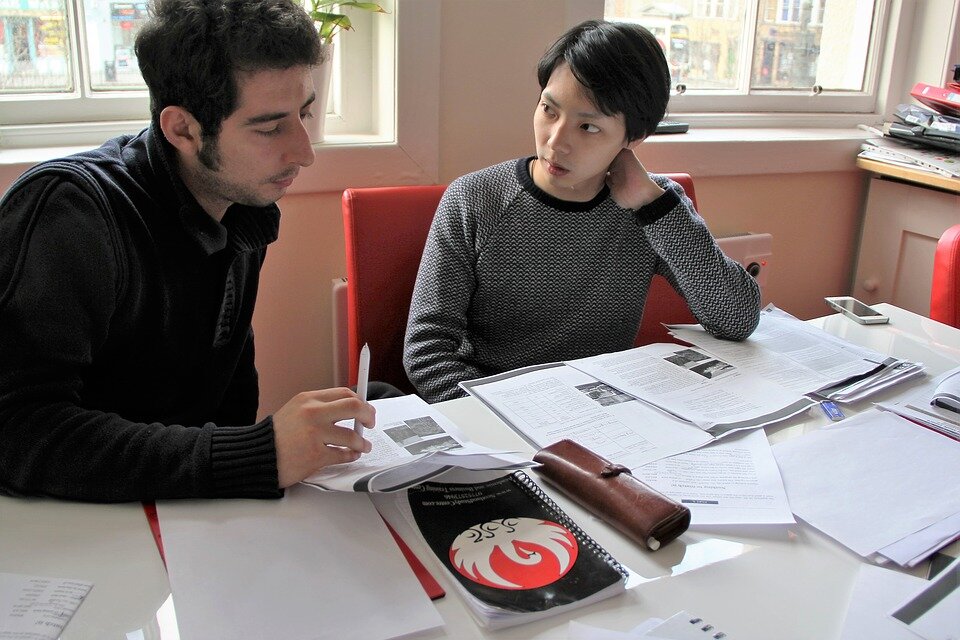How to Create the Perfect ESL Lesson Plan
If you're new to teaching abroad, we've got you covered. Learn how to create the perfect ESL lesson plan to keep your classroom organized and your students engaged.
TLDR 👀
- The PPP (presentation, practice, production) method makes structuring your lesson plan a breeze.
- It's important to consider time when lesson planning -- the time to create and carry out the lesson.
- Understanding the different learning styles will help you reach all of your students.
- Even the most prepared teachers can hit roadblocks. Never underestimate the power of games to fill unexpected gaps.

You’ve secured a placement in a classroom abroad, researched the gear and garb you’ll need to start your new life in a foreign country, and your visa paperwork is all sorted. You’re all set to teach English abroad, right?
Not so fast. For many teachers overseas, their time in the classroom will be their first experience teaching period, and the charge of teaching English as a Second Language (ESL) can be a daunting challenge. This is where lesson plans come in.
Lesson plans: the key to success in the classroom
A lesson plan is a well-thought-out and detailed guide that teachers create that lists their goals and objectives in a lesson and documents the procedures to achieve them. As you’ll quickly discover first hand, as an ESL teacher your lesson plan will be one of the most important tools in your tool belt.
With a properly prepared lesson plan, you’ll be able to walk into the classroom with confidence, fully aware of what your lesson entails and how to teach it. Without one, you’re likely to walk into your classroom unprepared, raising the chances of a chaotic and ineffective learning environment for your students.
With research, planning, and practice you can become an adept teacher. Success in the classroom will be dependent on several factors. However, advanced teachers know that classroom management and results-driven lessons don’t come down to dumb luck, but rather to a key you have control over: lesson planning.
Considerations for lesson planning
Before you jump into drafting a lesson plan, there are a few considerations you’ll need to make.
First of all, be sure to allow yourself plenty of time in the planning process. As your experience grows, the time it takes to make a lesson plan will decrease, however, your first few attempts may take more time as you get the basics down. Remember: the more time you put into planning, the greater your chances for a smooth lesson, so don’t be daunted by the time it takes to thoroughly prepare.
You’ll also want to make sure you think holistically about the elements that will need to be included in a lesson plan. These include timings, aims, activities, and interactions. Take a step back and look at the bigger picture before you begin writing.
Finally, you can’t begin drafting a lesson plan without first having a firm grasp of what you want your students to learn. These are your goals and objectives. To develop your lesson plan you’ll need to have this strong understanding of what you want your students to have achieved after your lesson.
How to write an ESL lesson plan

Your lesson plan will outline what you intend to teach in your lesson and how you intend to teach it. Likely the only person who actually reads your lesson plan will be you, so you can let the look of the lesson plan take a lower priority. Content matters more than presentation.
Start the draft of your lesson plan by listing the goals and objectives at the top as these are the elements that will influence your every move. While there are many different approaches to lesson planning, following a systematic approach is a great strategy for beginning teachers to learn the basics.
From the goals and objective section, you’ll want to move into the procedures of the lesson. For starters, every lesson, regardless of the topic, should be broken into three main stages. Referred to as the PPP methodology, you will follow this simple framework: presentation, production, and practice. These three stages will help students absorb content and the practice will help in effective learning. Of course, don't forget short warm-up and cool-down sessions at the beginning and end of each lesson.
1. Warm-up
Your ESL classroom should have a flow. Generally, you will want to start with a warm-up activity to get the kids talking and get their brains going in English when you start your lesson. Whether you have them first thing in the morning or at the end of the day, they'll probably need to ease into class. Something as simple as going over the day and weather is enough for younger grades. For older children, you could quickly verbally quiz them on a few things from the last lesson. If the class is a little rowdy, have them stand up and shake it out with a lightning game of Simon Says.
2. Presentation
Now that the class is focused and ready to learn, you can start with the material. In the presentation stage, you will present the lesson’s focus to your students so that they can begin to grasp exactly what it is they will be learning.
When it comes to ESL, the presentation stage may include an overview of new vocabulary words, conversation topics or even grammar rules. Remember: you’ll want to share the specific objectives and goals with your students during this stage so that they aren’t in the dark about what it is they are supposed to be learning.
With regards to how to present these objectives to your students, there are a number of ways to present the lesson’s focus to your students. Popular examples include flashcards, drawing pictures, showing an introductory video, or reading a children’s book that incorporates the subject matter for your lesson. It is important that you mix your strategy up between lessons to avoid boredom amongst students and keep the classroom engaged. Your methods of presentation also depend on the age and fluency of your students.
3. Practice
You know the saying “practice makes perfect?” Well, there’s certainly a lot of truth in this. Humans learn through practice, and as a teacher, it is your job to help students get the practice they need to absorb new content and topics.
In the controlled practice stage, you will need to give your students the opportunity to practice the lesson you’ve presented to them. During the practice stage, it is a good idea to use a game or activity that students can be involved in so that they are actively participating and engaged.
During this stage you will also want to make sure you are correcting your students’ errors including pronunciation mistakes or grammar structures. This is potentially the most important stage in your lesson because here you have the opportunity to pick up on errors and help students fix them. This stage also helps students build confidence to progress to the final stage of the lesson.
4. Production
In the production stage, your students need to be given the opportunity to use their newly learned subject matter freely. That means they are practicing, but not in front of the entire classroom.
Working in pairs or small groups are good ways to foster an environment for the production phase. As this part of the lesson takes place, wander amongst your students listening for and noting down any errors that are still being made. Once the activity has finished, there should be some time left over for feedback. This is where you and the students will talk about the lesson and you can mention any common recurring errors.
5. Review and closing
At the end of the lesson, you'll want to wrap it up. Do a quick recap and summary of what was learned. Then, you can open up the floor to questions or ask a few rapid-fire questions to test their overall comprehension. If you've timed your lesson well, your cool-down shouldn't be more than five minutes.
However, even with a lesson plan in hand, things can -- and will -- go wrong in the classroom. Perhaps the computer isn’t working properly, maybe you forgot to print out those grammar sheets you were going to use, or your students are simply just not in the mood to learn. . Ten extra minutes in the classroom can feel like ten hours when you have a room full of kids staring at you. For this reason, always be prepared!
Always be prepared

When lesson plan road bumps occur, you’ll have to think on your feet and use spontaneity and creativity to find a solution. This is when it is important to have fall-back activities ready that you can rely on. These will keep your ESL students busy and make you appear in control.
Read more: How to Build Rapport With Your ESL Students
These activities can be anything from games to songs to stories; basically, any activity that incorporates your aim for the lesson but doesn’t really feel like learning. We have a whole list of ESL games for your classroom, but some of our favorites from that list include:
- The Board Race: a popular game amongst the TEFL crowd. Split your class into two teams and create a relay race; students have to run to the board and write the words they have learned during your lesson. You can also use this at the start of class to review your last lesson’s vocabulary.
- Pictionary: everyone loves to draw! Even people who can’t draw want the chance to scribble on the white board. This popular team game challenges ESL students to draw a word on the board and have their team guess what it is. This certainly gets the creative juices flowing.
- Simon Says: I’ve never tried this one in my adult classrooms, but it’s a big hit with the younger students. You can get them doing the funniest things, which also makes it brilliant fun for you.
- Hangman: All ages seem to enjoy this game. It is a great one to play to kick-start a lesson or to keep students entertained in the final 5 minutes once you’ve wrapped everything up.
Craft the perfect plan
As you become more experienced you’ll find things that work for you and your students and things that don’t. As much as your students are learning from you, you'll learn from them what the best methods and techniques are to help them learn English, and you'll learn how to be the best teacher you can be.
This post was originally written in April 2013 and updated in November 2021.
